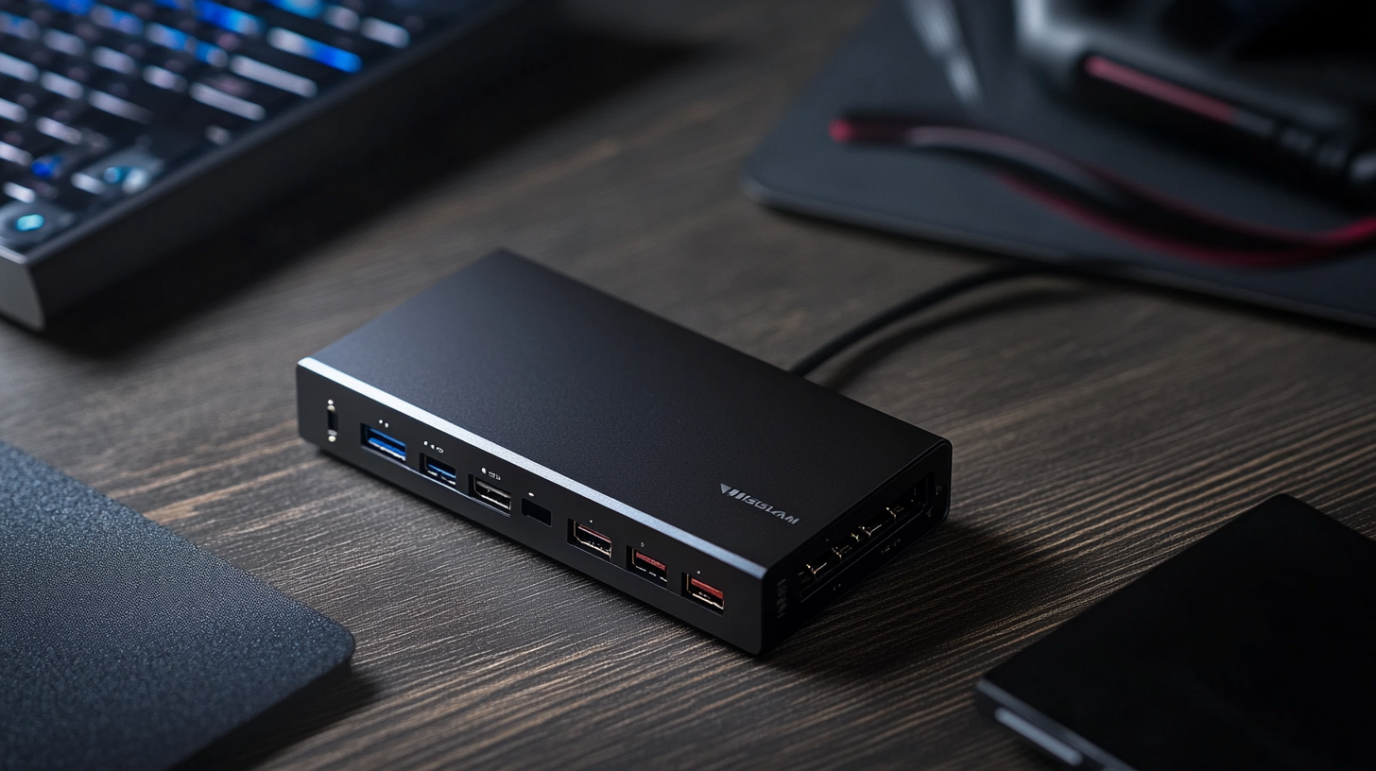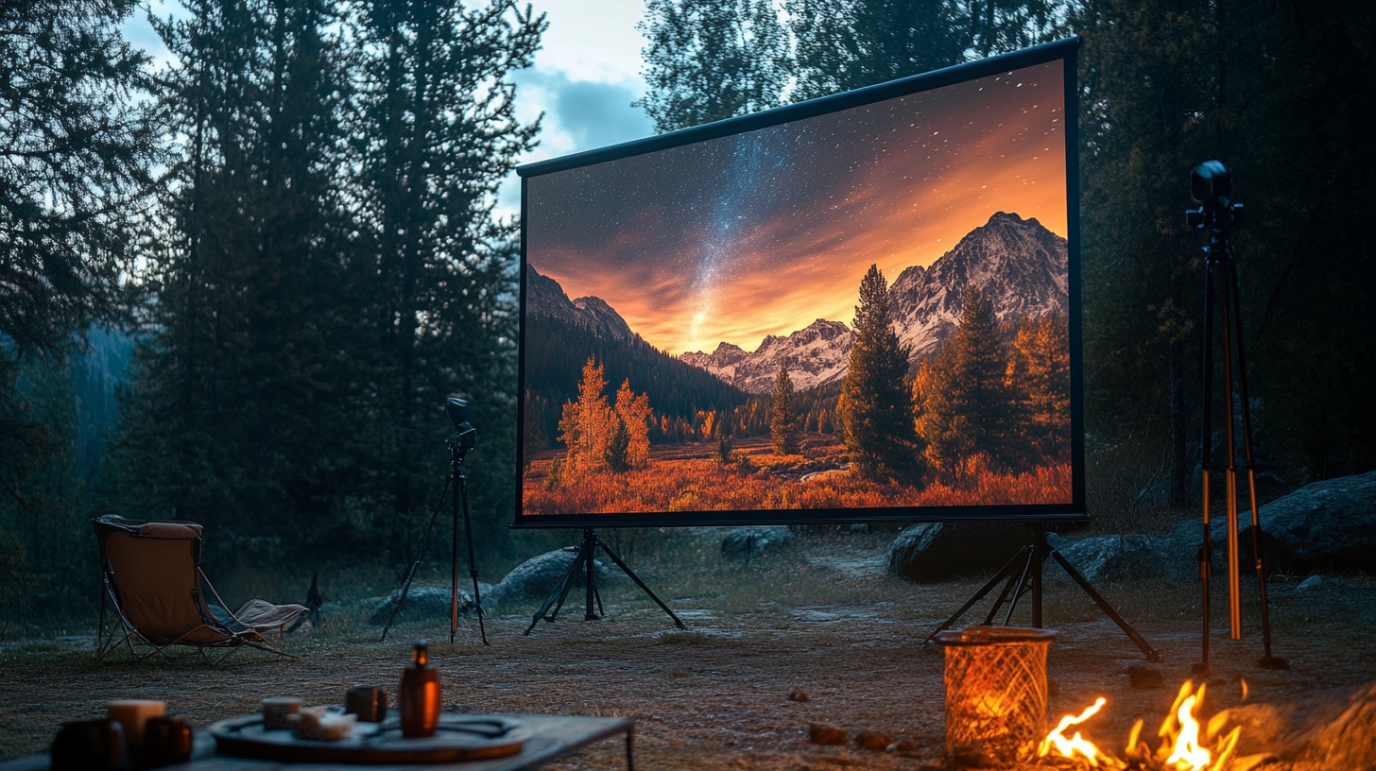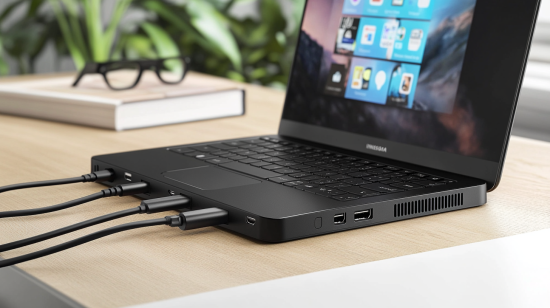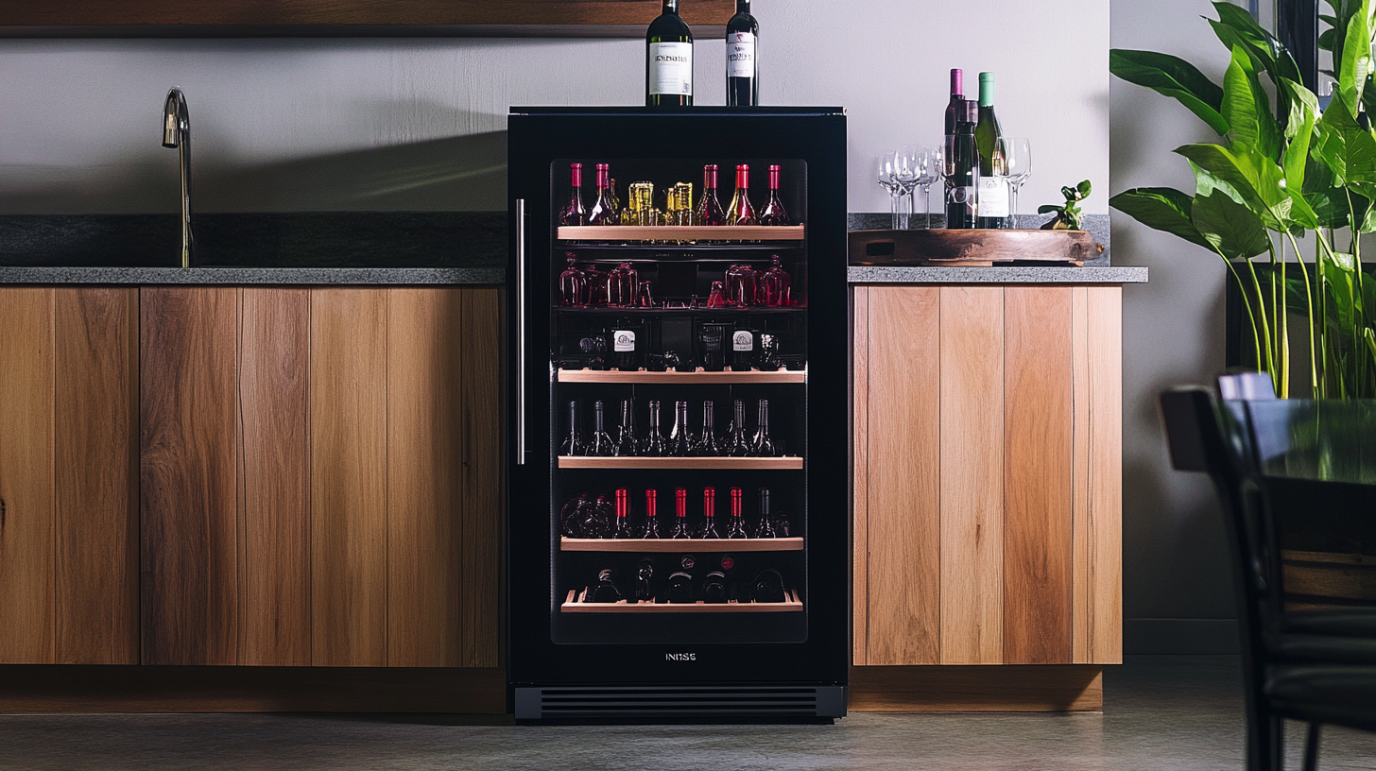
Insignia™ – 3-Port HDMI Switch with 4K 60Hz and HDR Pass-Through – Black
- Compatible with most HDMI source components Including Blu-ray Disc players, DVD players, digital cable and satellite boxes, gaming consoles, and digital media players.
- Connects up to three HDMI source components to a single HDMI output Switches between HDMI ports with a selection button.
- Supports full 4K 60Hz and HDR signals up to 18 Gbps Ensures impressive picture quality.
- HDCP v2.2 compatibility Prevents copying of digital audio and video content as it travels across connections.
- Select button Allows you to quickly select a video source.
$49.99
How One Little Device Solved My Entertainment System Nightmare
If you’re anything like me, your entertainment setup has probably evolved into a tangled mess of cables and devices fighting for limited HDMI ports. For months, I lived the frustrating ritual of manually unplugging and reconnecting devices whenever I wanted to switch from gaming to streaming to my laptop presentation setup. That all changed when I discovered the Insignia 3-Port HDMI Switch with 4K 60Hz and HDR Pass-Through – a tiny powerhouse that has completely transformed my viewing experience.
Let me walk you through everything you need to know about this game-changing device, from what exactly it is and how it works to whether it’s the right solution for your specific setup. I’ve spent countless hours testing it with various devices and scenarios, and I’m excited to share my honest insights.
What Is the Insignia 3-Port HDMI Switch (And Why Should You Care)?
First things first: what exactly is this device? The Insignia 3-Port HDMI Switch is essentially a hub that allows you to connect multiple HDMI devices to a single HDMI input on your TV or monitor. In simpler terms, it transforms one HDMI port into three, letting you keep your gaming console, streaming device, and laptop all connected simultaneously without the hassle of constantly swapping cables.
But this isn’t just any basic HDMI switch. The Insignia model specifically supports 4K resolution at 60Hz refresh rate and includes HDR pass-through capability. For the non-tech enthusiasts, this means you get crisp, detailed visuals with smooth motion and enhanced contrast – basically ensuring that the switch doesn’t compromise the quality of your content.
When I first unpacked mine, I was surprised by how compact it was – just a small black box that easily tucked behind my entertainment center. The design is minimalist and functional, with three HDMI input ports, one HDMI output port, and a simple selector button on top. Nothing flashy, but that’s exactly what I wanted – something that does its job without drawing attention to itself.
The Price Point: Is It Worth Your Hard-Earned Cash?
Let’s talk about the elephant in the room – cost. The Insignia 3-Port HDMI Switch typically retails for around $29.99 to $39.99, depending on where you shop and whether there are any ongoing promotions. I’ve seen it dip as low as $24.99 during sales events, which is when I snagged mine.
Is it worth it? After using it for several months, I can confidently say yes. Here’s my thought process: when you consider that high-quality HDMI cables alone can cost $10-15 each, and that buying a new TV with more HDMI ports would set you back hundreds, the switch is an incredibly cost-effective solution. Plus, the convenience factor is honestly priceless – no more crawling behind my entertainment center every time I want to switch devices!
Some might argue that there are cheaper switches on the market, and that’s true. But after researching extensively, I found that many budget options don’t support 4K at 60Hz or HDR, which were non-negotiable features for me. The Insignia hits that sweet spot of affordability while still delivering on performance.
Where to Buy: Finding the Best Deal
The Insignia brand is exclusive to Best Buy, so naturally, that’s the primary retailer. You can purchase it directly from Best Buy stores or their website. I’ve occasionally seen them available through Amazon as well, typically sold by Best Buy as a third-party seller.
If you’re looking to save a few dollars, I’d recommend keeping an eye on Best Buy’s weekly deals. They frequently include Insignia products in their promotions, especially during major shopping events like Black Friday or their occasional tech sales. I’ve also had luck finding open-box units at my local Best Buy at a discount – mine was an open-box item that saved me about $7, and it worked perfectly.
Another tip: if you’re a Best Buy rewards member (which is free to join), you’ll earn points on your purchase. Not a massive saving, but every little bit helps, right?
The Feature Breakdown: What Makes This Switch Special
Let’s dive deeper into what makes this particular HDMI switch stand out from the crowd. Here are the key features that convinced me to click “add to cart”:
4K Resolution at 60Hz
The ability to pass through 4K content at 60Hz is perhaps the most critical feature. This means the switch can handle the high-bandwidth signal required for ultra-high-definition content while maintaining a smooth refresh rate. When I’m playing games on my PS5 or watching 4K movies, there’s zero degradation in quality – the image is just as sharp and fluid as a direct connection.
HDR Pass-Through
High Dynamic Range (HDR) technology dramatically improves contrast and color accuracy, making images pop with more vibrant colors and deeper blacks. The Insignia switch supports HDR pass-through, meaning it won’t strip away those enhanced visual elements. When I switch from my Apple TV to my gaming console, I don’t have to worry about losing that gorgeous HDR quality that makes scenes like sunsets or starry skies look so spectacular.
Three Input Ports
Three ports might not sound revolutionary, but it’s the perfect number for most home setups. In my case, I have my Nintendo Switch, Apple TV, and laptop connected simultaneously. If you have more devices, you might need to consider a switch with more ports, but for the average user, three is the sweet spot between functionality and value.
Simple Operation
There are two ways to switch between connected devices: press the physical button on top of the unit or use the included remote control. I appreciate this flexibility – sometimes I’m right next to the switch and can just tap the button, while other times I’m comfortably settled on the couch and can use the remote.
Auto-Switching Capability
This feature was an unexpected bonus. The switch can automatically detect when you power on a device and switch to it. For example, when I turn on my PS5, the switch recognizes the active signal and automatically switches to that input. It’s not 100% reliable (more on that later), but when it works, it feels like magic.
Compact Design
Measuring roughly 3.5 x 2.4 x 0.6 inches, the switch is small enough to hide behind your TV or tuck into a small space in your entertainment center. The minimalist black design blends well with most equipment, and it’s lightweight enough that you can even mount it with a bit of velcro if needed.
Real-World Performance: How It Actually Works in Daily Use
Reading about features is one thing, but how does the switch perform in day-to-day use? Here’s my honest assessment after using it extensively:
Setup Process
Setting up the Insignia switch couldn’t be simpler. I connected the output port to my TV’s HDMI input, then plugged my devices into the three input ports on the switch. The switch comes with a power adapter that I plugged into a nearby outlet, and that was it – no software to install, no complicated configuration.
One thing to note: the placement of your switch matters. I initially had it behind a metal shelf, which interfered with the remote control’s infrared signal. After repositioning it to have line-of-sight with my seating area, the remote worked flawlessly.
Switching Between Devices
Switching between inputs is quick and responsive. Whether using the physical button or the remote, there’s typically only a 1-2 second delay before the new input appears on screen. Occasionally, I’ve experienced a slightly longer delay (3-4 seconds), particularly when switching to my laptop, but it’s never been problematic.
The auto-switching feature works about 80% of the time in my experience. It’s most reliable when switching to a device that’s just been powered on from a completely off state. If you’re toggling between devices that are already powered on, you’ll likely need to use the manual switch button or remote.
Visual Quality
This was my biggest concern before purchasing – would the switch degrade my picture quality? I’m happy to report that there’s no noticeable difference between connecting directly to my TV and going through the Insignia switch. 4K content remains crystal clear, motion is smooth at 60Hz, and HDR content maintains its enhanced color and contrast.
I’ve tested it with various content types:
- Fast-paced games that demand low latency
- 4K HDR movies with complex dark scenes
- Standard 1080p content from older devices
In all cases, the performance has been excellent. I’ve experienced no signal dropouts, no color distortion, and no perceptible increase in input lag for gaming.
Audio Performance
The switch handles audio pass-through just as well as video. It supports standard HDMI audio formats, including Dolby Digital and DTS. I’ve connected it to both my TV’s built-in speakers and my soundbar (via the TV’s ARC port), and the audio quality and synchronization have been flawless.
One limitation to note: while it supports basic HDR and most standard audio formats, it doesn’t support Dolby Vision or Dolby Atmos pass-through. For most users, this won’t be an issue, but if you’re a serious audiophile with an Atmos setup, you might want to consider a more specialized (and expensive) switch.
Gaming Performance: Does It Hold Up to Fast-Paced Action?
As a casual gamer, I was particularly concerned about how the switch would handle gaming sessions. Would it introduce lag? Would it maintain the high refresh rates needed for smooth gameplay?
I’ve tested the switch extensively with my Nintendo Switch and occasionally with a friend’s PS5, playing a variety of games from fast-paced shooters to racing games that demand quick reflexes. The verdict? I haven’t noticed any additional input lag compared to a direct connection.
The 4K 60Hz capability is particularly important for newer consoles like the PS5 and Xbox Series X. These consoles can output games at 4K resolution with framerates up to 60fps (and sometimes 120fps for certain titles), and the Insignia switch handles 4K/60Hz without breaking a sweat.
One limitation to be aware of: if you’re a competitive gamer who needs 120Hz refresh rates for certain titles, this particular switch maxes out at 60Hz. For the vast majority of console gamers, 60Hz is perfectly adequate, but it’s something to consider if you’re using a high-refresh-rate gaming monitor.
Compatibility: Will It Work With Your Devices?
I’ve tested the Insignia switch with numerous devices, and compatibility has been excellent across the board. Here’s a rundown of confirmed compatible devices based on my experience and research:
- Gaming consoles: Nintendo Switch, PS4, PS5, Xbox One, Xbox Series X/S
- Streaming devices: Apple TV 4K, Roku Ultra, Amazon Fire TV Stick 4K, Chromecast with Google TV
- Computers: MacBook Pro, Windows laptops, Mac Mini
- Blu-ray players: Sony UBP-X700, LG UBK90
- Cameras: Sony A7III (via HDMI output)
The switch is essentially compatible with any device that outputs via HDMI, which covers the vast majority of modern entertainment equipment. The only potential issue is with older devices that use different connection standards (like component video), which would require an adapter.
Addressing Common Questions and Concerns
Throughout my research and personal experience, I’ve encountered several common questions about this HDMI switch. Let me address them directly:
Does it support HDCP 2.2?
Yes, the Insignia switch is compatible with HDCP 2.2 (High-bandwidth Digital Content Protection), which is essential for playing protected 4K content from streaming services and Blu-rays. I’ve had no issues playing protected content from Netflix, Disney+, or Amazon Prime Video.
Can it handle multiple active devices simultaneously?
The switch can have multiple devices connected and powered on simultaneously, but it can only display one input at a time on your TV. If you’re looking for picture-in-picture or multi-view functionality, you’d need a different type of device (like a video processor).
Does it work with CEC (Consumer Electronics Control)?
In my experience, CEC functionality works inconsistently through the switch. Sometimes my TV will turn on when I power up a connected device, and sometimes it won’t. If CEC integration is crucial for your setup, you might want to explore more specialized options.
How durable is it?
After several months of daily use, my unit shows no signs of wear or performance degradation. The casing is plastic but feels sturdy enough for typical home use. I wouldn’t recommend frequently transporting it in a bag without protection, but for a stationary setup, durability hasn’t been a concern.
Does it get hot during operation?
The switch does warm up slightly during extended use, but never to a concerning degree. I’ve had it running continuously for 12+ hour gaming sessions without any overheating issues or performance degradation.
Potential Drawbacks: The Not-So-Perfect Aspects
While I’m generally very positive about this device, no product is perfect. Here are some limitations and minor annoyances I’ve encountered:
Remote Control Quality
The included remote works but feels somewhat cheap and requires direct line-of-sight to function. It’s also quite small and easy to misplace – I ended up taping mine to the side of my entertainment center after losing it for the third time.
Auto-Switching Reliability
As mentioned earlier, the auto-switching feature works most of the time but isn’t 100% reliable. There have been occasions where I’ve had to manually switch inputs despite powering on a device, which slightly diminishes the convenience factor.
No Dolby Vision Support
While the switch handles standard HDR formats, it doesn’t support Dolby Vision pass-through. For most users, this won’t be noticeable, but if you have a TV capable of Dolby Vision and frequently watch Dolby Vision content, you might notice a difference.
Maximum 60Hz Refresh Rate
The 60Hz maximum refresh rate is perfectly adequate for most users and content, but it could be limiting if you’re using a gaming setup capable of 120Hz or higher. Some premium gaming monitors and newer TVs support these higher refresh rates for ultra-smooth motion.
Comparing to Alternatives: How Does It Stack Up?
The HDMI switch market is surprisingly crowded, with options ranging from $10 budget models to $100+ premium versions. Here’s how the Insignia compares to some alternatives:
Budget Alternatives
There are numerous $10-20 HDMI switches available from lesser-known brands. These typically lack the 4K/60Hz capability, HDR support, or may have reliability issues. I tried a $15 model before upgrading to the Insignia, and the difference in performance and reliability was immediately noticeable.
Premium Alternatives
On the higher end, brands like Kinivo and Avedio Links offer switches with additional features like more ports (5-8 inputs), support for 8K resolution, or higher refresh rates. These typically cost $50-100 and may be worth considering if you have very specific needs beyond what the Insignia offers.
Similar Price Range
In the same price bracket as the Insignia, you’ll find models from companies like Techole, UGREEN, and HDMI Switcher that offer comparable features. In my research, the Insignia stood out for its balance of reliability, brand reputation (with Best Buy’s backing), and feature set.
Warranty and Support: What If Something Goes Wrong?
The Insignia 3-Port HDMI Switch comes with a standard one-year limited warranty from Best Buy. This covers manufacturing defects but not accidental damage. While I haven’t had to use the warranty service, Best Buy generally has a straightforward process for returns and exchanges within the warranty period.
If you’re considering purchasing this switch, it might be worth asking about extended warranty options, particularly if you plan to use it in a setting where it might be subject to more wear and tear than a typical home environment.
My Final Verdict: Is This the Right HDMI Switch for You?
After months of using the Insignia 3-Port HDMI Switch with 4K 60Hz and HDR Pass-Through, I can confidently recommend it for most home entertainment setups. It strikes an excellent balance between affordability, performance, and ease of use.
This switch is likely right for you if:
- You have more HDMI devices than available ports on your TV
- You value picture quality and want to maintain 4K resolution and HDR
- You’re looking for a simple, reliable solution without breaking the bank
- You primarily watch content and play games at 4K/60Hz or lower
You might want to look elsewhere if:
- You need more than three input ports
- You require Dolby Vision or Dolby Atmos pass-through
- You need support for refresh rates higher than 60Hz
- You’re looking for advanced features like picture-in-picture
For me, the Insignia switch has been one of those rare purchases that solved exactly the problem I had without creating new ones. The convenience of having all my devices connected simultaneously, ready to use at the press of a button, has genuinely improved my entertainment experience.
No more crawling behind the TV, no more memorizing which HDMI port connects to which device, and no compromise in picture quality. For around $30, that’s a pretty significant quality-of-life improvement for any modern entertainment setup.
If you’re still juggling cables and constantly reconnecting devices, do yourself a favor and consider the Insignia 3-Port HDMI Switch. Your future self – comfortably switching between devices from the couch – will thank you.
Frequently Asked Questions
How long are the included cables?
The Insignia 3-Port HDMI Switch doesn’t come with HDMI cables – only the power adapter and remote control are included. You’ll need to use your existing HDMI cables or purchase new ones separately.
Can I use this switch without the power adapter?
Technically, the switch may work without power for some low-bandwidth connections, but for 4K content and reliable performance, the power adapter is necessary. I wouldn’t recommend trying to use it unpowered.
Will this switch work with older 1080p TVs?
Absolutely! While it supports 4K resolution, it’s fully backward compatible with 1080p and 720p displays. The switch will automatically negotiate the best possible resolution between your source device and display.
Does it work with game capture cards?
Yes, I’ve successfully used it with a friend’s Elgato capture card for recording gameplay. The switch passes the signal through without issue, making it compatible with most capture setups.
Can I connect this to a projector instead of a TV?
Definitely! As long as your projector has an HDMI input (which most modern projectors do), the switch will work exactly the same as it would with a TV. I’ve temporarily set it up with a portable projector for an outdoor movie night with great results.





